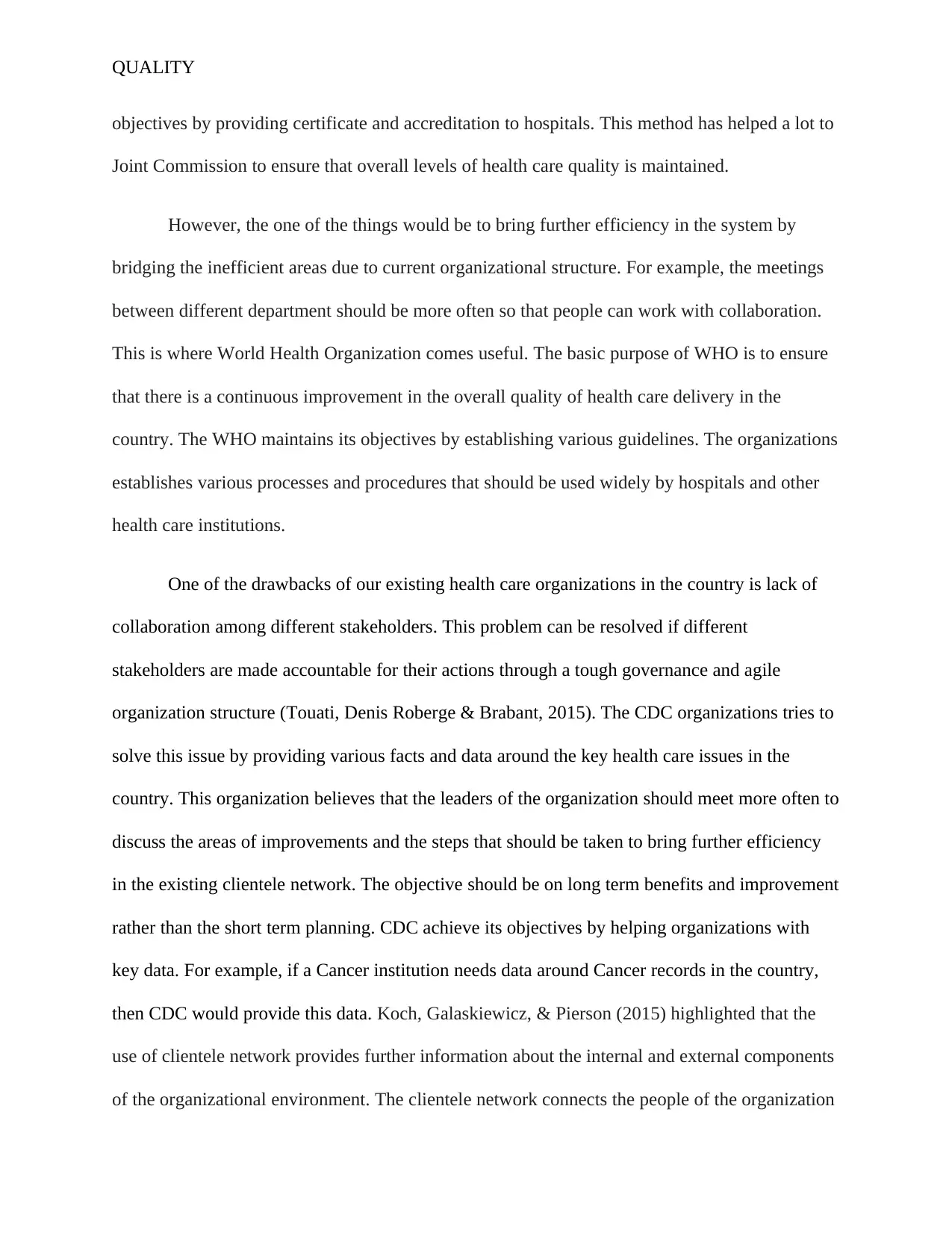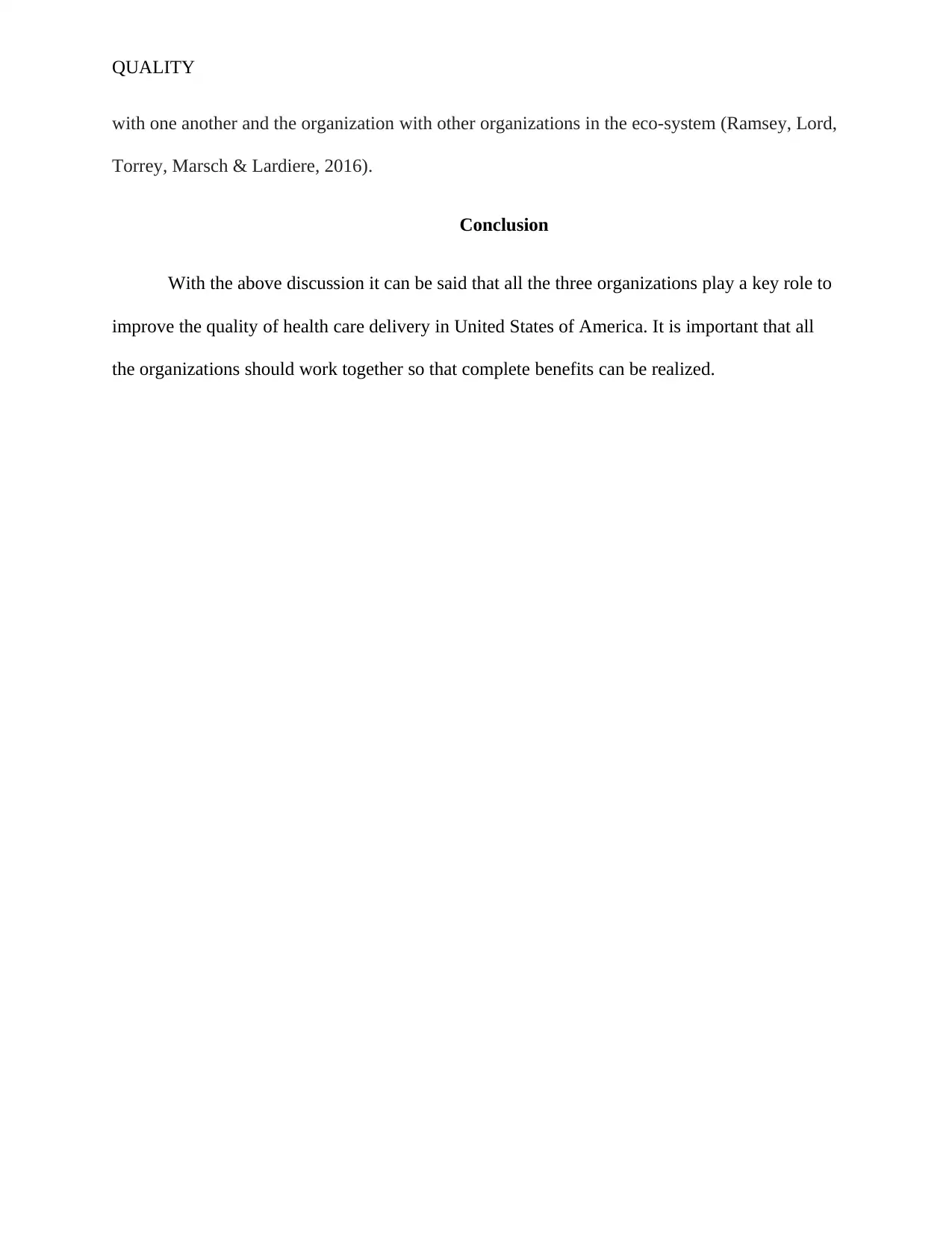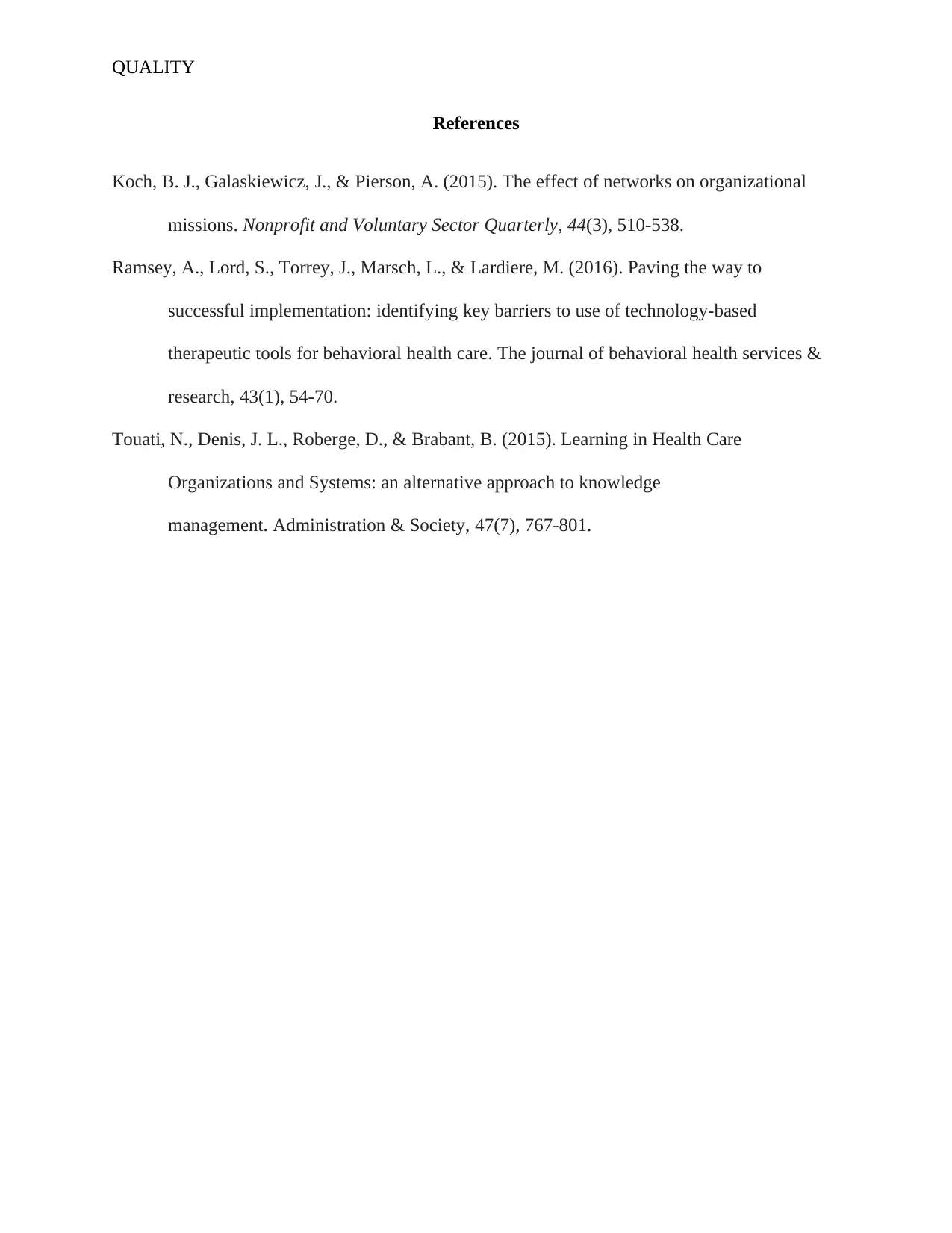Healthcare Quality: Analyzing Joint Commission, WHO, and CDC Roles
VerifiedAdded on 2021/05/31
|5
|885
|422
Report
AI Summary
This report examines the roles of the Joint Commission, World Health Organization (WHO), and the Centers for Disease Control and Prevention (CDC) in maintaining and improving healthcare quality. It begins with an introduction emphasizing the significance of accreditation and certification in healthcare, highlighting the contributions of organizations like the Joint Commission in setting standards for patient care and safety. The analysis delves into the missions, purposes, duties, responsibilities, and quality monitoring methods of the three selected organizations. The Joint Commission focuses on establishing guidelines and providing accreditation to hospitals to ensure adherence to quality standards. The WHO aims for continuous improvement in healthcare delivery through the establishment of guidelines and procedures. The CDC addresses key health care issues by providing data and facts, encouraging collaboration and long-term planning. The report concludes by emphasizing the importance of collaboration among these organizations to achieve comprehensive benefits in healthcare quality within the United States.
1 out of 5












![[object Object]](/_next/static/media/star-bottom.7253800d.svg)